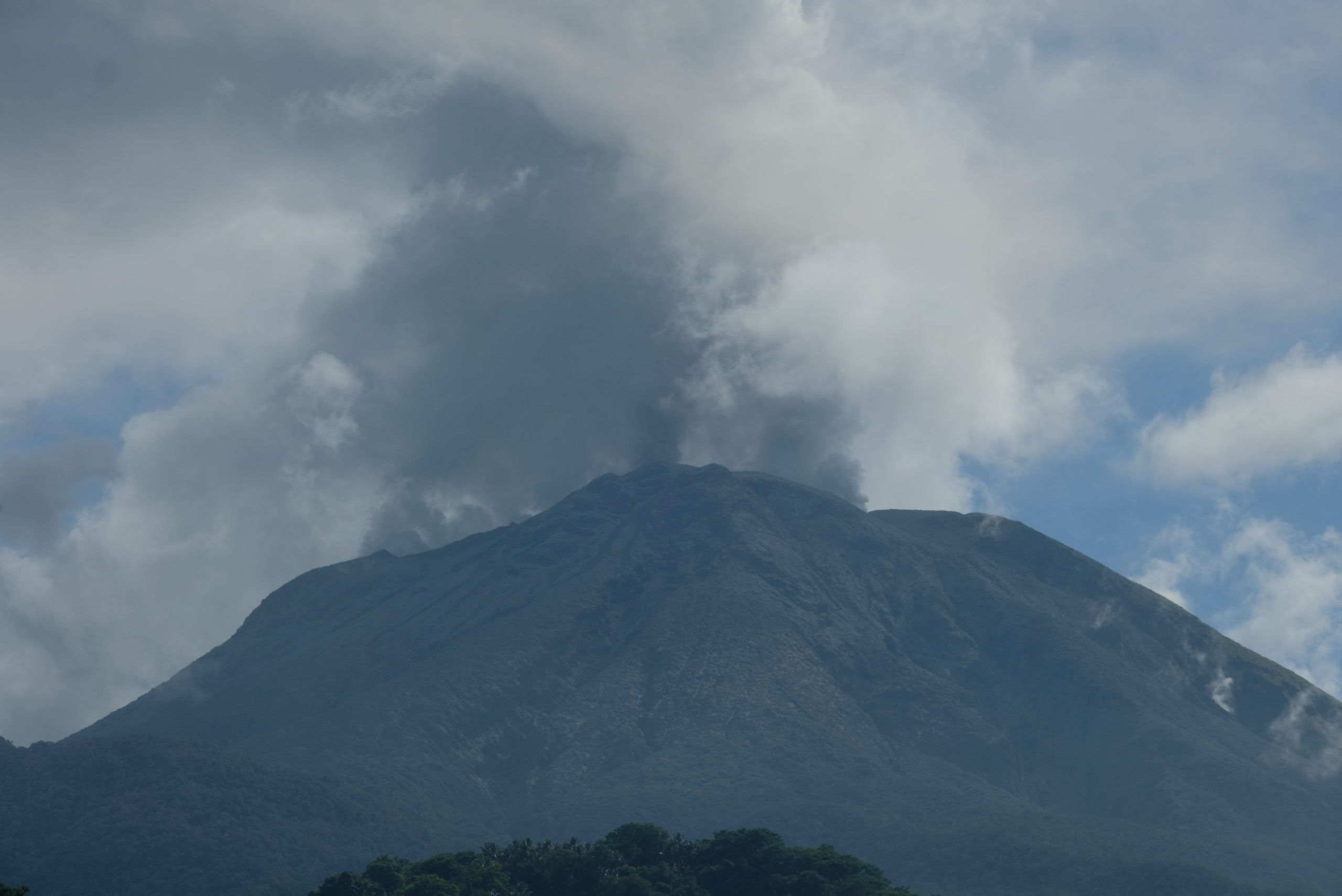
FILE PHOTO: Mount Bulusan in Sorsogon spews a thick plume in this photo taken on June 12, 2022. The Philippine Institute of Volcanology and Seismology hoisted the alert level 1 over the volcano on Oct. 12 due to “increased hydrothermal activity.” Photo by Michael Fugnit, Contributor
LEGAZPI CITY — Residents in communities around Mount Bulusan in Sorsogon province were advised to prepare for a possible eruption after alert level 1 was raised over the volcano due to its “increased hydrothermal activity.”
The Philippine Institute of Volcanology and Seismology (Phivolcs) issued the alert on Thursday to those living in the towns of Juban, Irosin, Bulusan, Casiguran and nearby areas after the agency recorded 313 volcanic earthquakes in the past 24 hours of monitoring.
Jonnel Bolaño, 22, a resident of Barangay Puting Sapa in Juban, said his family had already prepared a bag containing personal necessities that they could grab once the local government would order a forced evacuation.
“Even when we returned home last June [after the phreatic eruptions that month], we’re always ready for a possibility of another eruption,” he said.
Salvador Mendoza, spokesperson for the Sorsogon provincial government, said they started distributing relief goods to local governments last week in preparation for possible evacuation. Government trucks were being prepositioned for the distribution of potable water and for clearing operations in case of ashfall.
“Locals had a hard time in clearing the areas affected by ashfall and getting potable water [during the recent eruption of Bulusan volcano], so we purchased 24 heavy equipment to help them,” Mendoza said.
He said 500 sacks of rice were initially distributed to Bulusan, Juban, Irosin and Casiguran on Monday.
Alert raised
In its 8 a.m. bulletin on Thursday, Phivolcs said the volcano’s edifice was inflated, indicating a possibility of sudden steam-driven or phreatic eruptions.
On Wednesday, Phivolcs again raised alert level 1 over Bulusan, after this was lowered to zero (quiet or no alert) on Aug. 21.
The agency also said that “a pronounced and ongoing inflationary trend” was detected since late September on the southwestern and southern slopes.
Bulusan emitted 279 tons of sulfur dioxide on Sept. 29.
The stench from sulfur was also reported by residents of Sitio Talistison in Barangay Mapaso, Irosin and in the village of San Roque in Bulusan town on Monday and Tuesday.
In Juban, the town which was mostly affected during the June 5 and June 12 phreatic eruptions of Bulusan, village officials were ordered to monitor their communities and prepare the residents, especially in areas prone to ashfall.
In June, some 2,877 families or 11,348 people were affected by the ashfall in different Sorsogon towns.
“We are now monitoring the weather condition and the wind direction to determine the areas that would possibly be affected by heavy ashfall,” said Arvee Lodronio, head of the municipal disaster risk reduction and management (DRRM) of Juban.
In the previous eruptions, the ashfall reached the villages of Buraburan, Sangkayon, Puting Sapa, Añog, Bacolod, Catanusan and Guruyan.
Ensuring safety
Bolaño’s family also evacuated at the town’s gym during the eruption in June, along with 148 families (489 people) from his village of Puting Sapa.
Lodronio said there were no residents living in the danger zones, but residents were also at risk of possible lahar flow during rainy days.
He said evacuation centers were always ready as these were no longer used as quarantine facilities for COVID-19 patients.
In Manila, President Marcos urged residents living near Bulusan to stay alert, assuring them that the National Disaster Risk Reduction and Management Council, the Office of Civil Defense and the Department of Social Welfare and Development were ready to ensure their safety.
In a Twitter post on Thursday, the Office of the Press Secretary (OPS) said it would promote “increasing the availability of access to early warning systems and disaster risk information and assessment.”
“We at OPS and other agencies are committed to delivering factual and prompt information about calamities to inform, educate and warn the Filipino people in times of emergency and disaster,” the OPS said.
—WITH A REPORT FROM NESTOR CORRALES
READ: Army deploys 1,000 soldiers for clearing operations as Bulusan spews ash anew